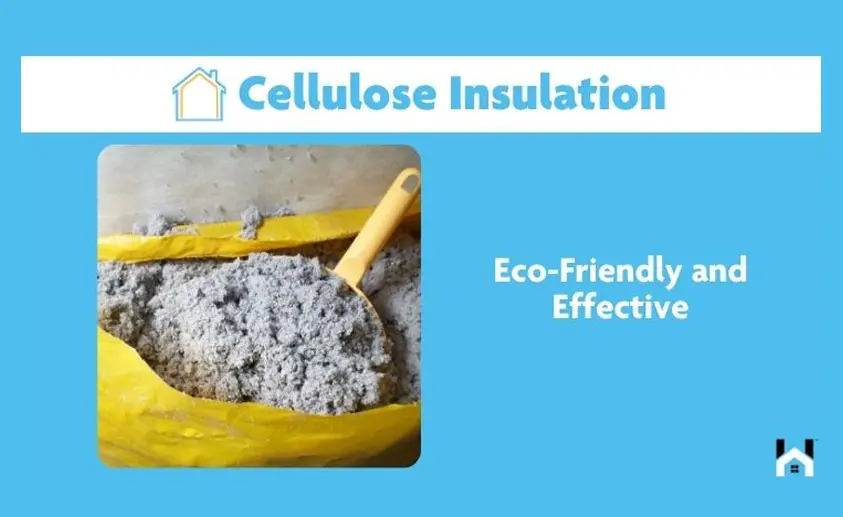Cellulose Insulation: Eco-Friendly and Effective

Cellulose insulation is increasingly recognized as a sustainable and effective solution for enhancing energy efficiency in homes and buildings.
Primarily composed of recycled paper products, it not only helps to reduce environmental waste but also offers substantial cost savings on energy bills.
This article will delve into what cellulose insulation is and how it is produced, examine its benefits, discuss various installation techniques, and provide maintenance tips.
Additionally, it will compare cellulose insulation with other types, enabling you to make an informed decision.
Discover how this eco-friendly option can improve your living space while being kind to the planet.
What is Cellulose Insulation and How is it Made?
Cellulose insulation is an eco-friendly option primarily made from recycled paper products. The cellulose fibers are treated to resist fire and pests, making it a sustainable choice for both residential and commercial building insulation. This natural insulation provides effective thermal performance while also contributing to resource conservation and a reduced carbon footprint.
The production process starts with sourcing post-consumer paper, such as newspapers and cardboard, which is then shredded and transformed into cellulose fibers. These fibers undergo treatment to enhance their durability, incorporating non-toxic fire retardants for safety and pest control agents to deter insects.
This thorough approach not only improves insulation properties—such as soundproofing and air sealing—but also supports sustainable construction practices by decreasing reliance on virgin materials.
As a result, users experience enhanced energy efficiency, all while contributing to a healthier environment and promoting the use of eco-friendly materials in buildings.
Benefits of Cellulose Insulation
Cellulose insulation presents numerous advantages, making it an excellent option for environmentally conscious homeowners and builders. Renowned for its exceptional insulation performance, cellulose insulation boosts energy efficiency, which leads to cost savings and enhances indoor air quality.
Additionally, it reduces the environmental impact often associated with conventional insulation materials.
Environmental Impact
The environmental impact of cellulose insulation is largely positive, primarily because it is made from sustainable materials and involves recycling cellulose fibers from paper products. When homeowners opt for cellulose insulation, they actively contribute to reducing their carbon footprint and fostering resource conservation within the building industry.
This innovative insulation material is notable not just for its effective thermal performance but also for its biodegradability. Unlike traditional materials such as fiberglass or foam, cellulose naturally decomposes at the end of its life cycle. In contrast, those alternatives often add to landfill waste and can take centuries to break down. By using recycled cellulose, we promote a circular economy that lessens the demand for virgin resources and reduces the amount of waste sent to already overcrowded disposal sites.
Choosing cellulose insulation not only improves energy efficiency in homes but also signifies a commitment to sustainable living, benefiting both communities and the planet as a whole.
Energy Efficiency and Cost Savings
One of the most compelling reasons to consider cellulose insulation is its outstanding energy efficiency, which can lead to significant savings on heating and cooling expenses. With a high R-value, cellulose insulation effectively creates a thermal barrier, improving HVAC efficiency and reducing energy consumption in both residential and commercial environments.
In fact, when compared to fiberglass or foam insulation, cellulose often demonstrates a superior R-value, meaning it delivers better insulating power for each inch of thickness. This enhanced performance can result in noticeable energy savings; for instance, a home that opts for cellulose may experience up to a 30% reduction in heating costs during the winter months, depending on factors such as climate and usage.
By minimizing energy loss, proper insulation not only helps maintain comfortable indoor temperatures but also plays a vital role in broader energy conservation efforts. Over time, these savings can accumulate significantly, assisting homeowners in recovering their initial investment while also contributing to sustainability initiatives.
Installation and Application of Cellulose Insulation
Installing cellulose insulation involves several methods that cater to specific applications. For instance, blown-in cellulose is often used for attics and walls, while cellulose insulation bats are suitable for basements.
Each of these installation techniques presents distinct advantages, contributing to optimal performance and thermal efficiency across various building types.
Methods and Techniques
The methods and techniques for installing cellulose insulation can differ, typically encompassing blown-in and spray applications. Both approaches are designed to provide complete coverage and ensure effective insulation in various areas, such as attics and walls.
Each application requires specific equipment. For instance, blown-in insulation utilizes a high-capacity blowing machine, which aids in distributing the material evenly and reduces the risk of gaps that could compromise its effectiveness.
Best practices start with thorough preparation of the space, including sealing any existing air leaks prior to installation. During the application, it is crucial for professionals to monitor the insulation's density to meet established guidelines, thereby ensuring optimal performance over time.
Achieving proper coverage involves layering the in
sulation at uniform densities, particularly around obstructions and in corners that are often overlooked. This attention to detail significantly enhances the overall effectiveness of the insulation.
Maintaining and Repairing Cellulose Insulation
Maintaining and repairing cellulose insulation is essential for ensuring its longevity and effectiveness. This, in turn, can significantly influence energy efficiency and indoor air quality.
Regular inspections and prompt repairs play a vital role in identifying any issues that might compromise the insulation's performance.
Tips for Long-Term Effectiveness
To ensure the long-term effectiveness of cellulose insulation, it is essential to address factors such as moisture control and pest resistance, as both can directly impact the insulation's performance and the overall indoor air quality of your space.
Homeowners can take several straightforward steps to effectively manage these factors.
- Regularly checking for leaks in roofs, windows, and plumbing can help maintain appropriate moisture levels, thus preventing mold growth and degradation of insulation.
- Installing a dehumidifier in particularly humid areas can also prove beneficial.
- It is crucial to inspect the insulation periodically for any signs of pests.
- Sealing any cracks or openings in the home will deter rodents and insects from nesting in the cellulose.
- Ensuring that the space is well-ventilated directly contributes to maintaining ideal conditions for the insulation, promoting airflow and preventing stagnation.
Comparing Cellulose Insulation to Other Types
When comparing cellulose insulation to other types, like fiberglass, it is important to consider several factors, including insulation effectiveness, environmental impact, and cost.
Cellulose insulation presents significant advantages in terms of sustainability and thermal performance; however, it also has some disadvantages that should be evaluated thoughtfully.
Pros and Cons
Cellulose insulation presents a variety of advantages and disadvantages that can significantly impact your insulation choices. On the positive side, it offers excellent insulation effectiveness, energy efficiency, and soundproofing capabilities. However, there are also potential drawbacks, such as moisture sensitivity and installation costs.
For homeowners considering cellulose insulation, its superior R-value is often a noteworthy benefit, frequently surpassing that of fiberglass options and providing enhanced thermal resistance. Additionally, since this type of insulation is typically made from recycled paper products, it stands out as an environmentally friendly choice that contributes to waste reduction.
It is important to note that cellulose can absorb moisture, which may lead to mold growth if not installed correctly. The installation process might also be more labor-intensive and expensive compared to other insulation materials, which could be a concern for those on a budget.
Carefully weighing these factors is crucial for making an informed decision that balances cost, environmental impact, and long-term energy savings.

Need help with
your project?
Whether you’re planning a project or just trying to remember when to clean your gutters, we’ve got your back (and your inbox).



